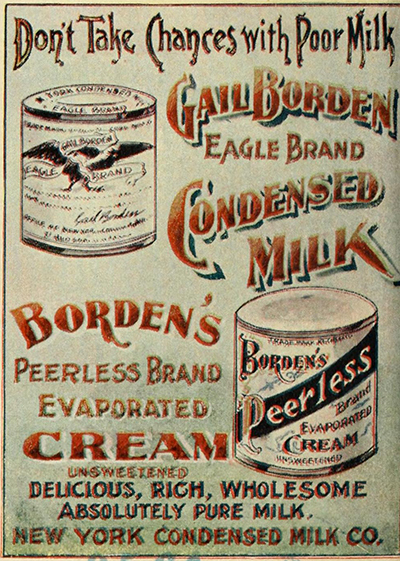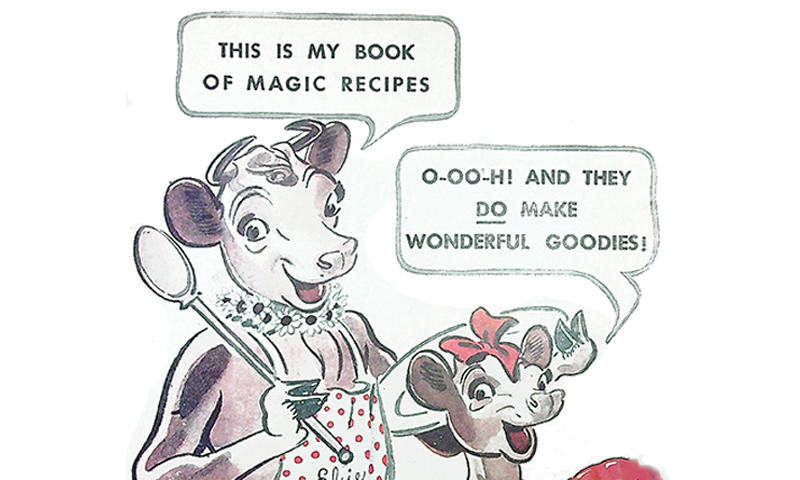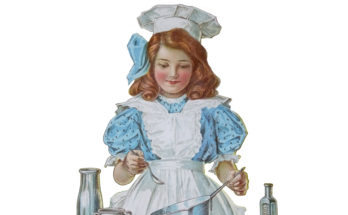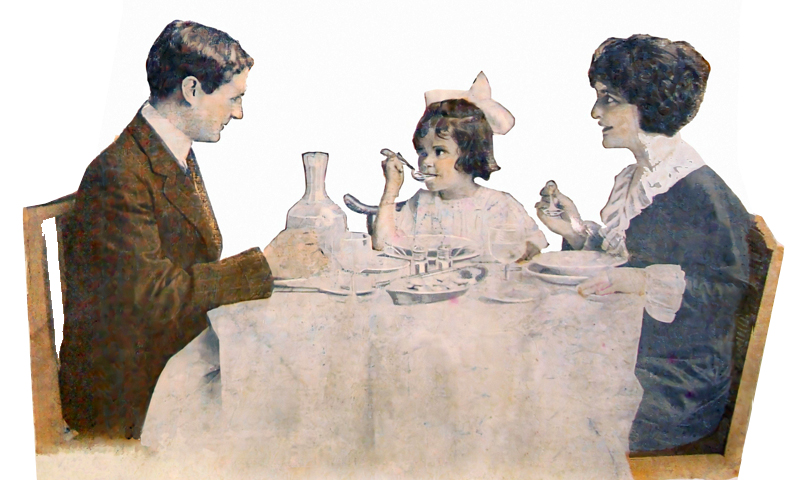
Mr. Gail Borden (1801–1874) formulated the invention for canned condensed milk in 1851, worked and perfected it for a few years, and received a patent in 1857. His patent consisted of a process to evaporate milk, sugar helping as a preservative.
Condensed milk is sweetened canned milk, evaporated milk is the unsweetened.
Borden’s condensed milk was supplied to Northern soldiers during the Civil War, and the soldiers brought news of it to their families, popularizing Borden’s Eagle Brand Condensed Milk.

Evaporated milk, the unsweetened milk, was more of a challenge to preserve as it lacked sugars. Canned evaporated milk was invented in 1885—not by Borden—but Borden’s Peerless Brand Evaporated Cream debuted in 1892. The first ad I found for Borden’s evaporated product was 1894. It was called a cream, not a milk. The picture here of the two products is from 1898 advertised in the book, “To the Klondike Gold Fields” as both canned milks were important stock items for the adventurous stampeders.
When Borden invented condensed canned milk in 1851, most people either had their own cows or relied on local dairymen who delivered milk in large containers using horse-drawn carts. These dairymen would pour milk into customers’ containers along their delivery routes. The individual glass milk bottle wasn’t invented until 1878, and as late as the 1950s, milkmen would deliver cold bottles in dedicated insulated metal crates outside people’s homes.
Since the 1800s, grocery stores primarily sold canned milk due to its shelf stability. What a god-send canned milk must have been for people without a cow or goat, etc. who relied on root cellars or the new invention of ice boxes to keep the home deliveries of fresh milk COLD. However, in the 1920s and 1930s, electric refrigerators made it easier for homemakers to keep fresh delivered milk safe, leading to a decline in demand for canned milk.
Refrigerated grocery cases became common beginning in the 1940s, marking the beginning of the end for home milk deliveries. During this time, powdered milk –a competitor of canned milk– also gained popularity, as it could be mixed in advance and kept fresher longer with home refrigeration.
My grandfather kept a cow in a relatively densely populated area during the 1900s and 1910s, near a pasture that is now a hotel. With about 20 children in the family, the daily milk production from one cow was sufficient and unlikely to spoil in a small icebox. However, when the family no longer had a cow, they developed a taste for evaporated milk, likely in the 1920s and 1930s. New Englanders particularly enjoyed evaporated milk in classic chowders, as well as for its somewhat caramelized flavor on Jell-O with sprinkled sugar, and in pies, puddings, and other desserts.
Recipes The Borden Way 1908 booklet, [reddit] but to me, evap. milk with its unique creamy caramelized taste makes for an entry into my interesting ingredients list.


